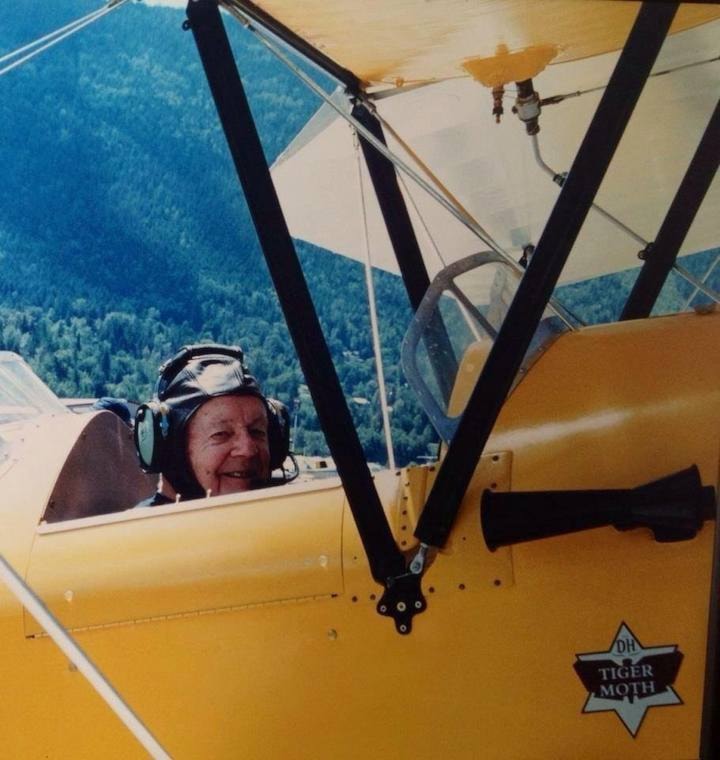Henry Stevenson lived to be 99 but nearly died when he was one.
He was critically ill in the summer of 1917 while his family was living in Granum, Alta., where his father accepted a blacksmithing job. A doctor believed the alkali in the Prairie water was burning Henry’s stomach and suggested “It’s back to mountain water or the graveyard.”
As Henry recounted, the Stevenson family — which then included his parents and 2½-year-old sister Margaret — loaded their belonging into a 1913 Model T touring car and began making their way back to Nelson over roads that “consisted of black Prairie clay turned to gumbo by heavy rains.”
The memorable journey took six days. Theirs was the first vehicle ever to cross the Waterloo ferry (at present-day Kinnaird), and they encountered Doukhobor leader Peter (Lordly) Verigin who initially denied their request to cross the Brilliant suspension bridge, fearing it wouldn’t support the car’s weight. They convinced him otherwise, but Verigin insisted the children be carried across on foot — and volunteered to take Henry.
Stevenson’s mother Jennie arrived in Nelson in 1906 from Sweden, intending to visit her brothers in Phoenix, the flourishing Boundary mining town. She crossed the Atlantic by ship and the US by train despite only knowing a single word of English: no.
In Nelson, she stayed at the Grand Central Hotel, which had a Swedish chef, and accepted a job as a waitress and chambermaid. She expanded her English vocabulary by reading the Eaton’s catalogue.
She also met Hazen Stevenson, a blacksmith who arrived in Nelson from New Brunswick in 1908. They married in 1914. Margaret was born the next year, followed by Henry on April 12, 1916, Frank in 1917, and Alice in 1923. Henry entered the world at the Home Hospital on Falls St. and returned there when he contracted the Spanish flu. He survived, but his younger brother wasn’t as lucky; Frank succumbed at the age of nine months.
In a 2009 interview with Greg Scott, Henry recalled a rambunctious childhood.
"I seem to have a way of attracting the unusual,” he said. “I don't look for trouble, it seeks me out."
In one incident, he and his friends found some dynamite sticks, and after considering various schemes and the likelihood of being caught, they built a bomb, placed it at the end of the boat dock, lit the fuse, and ran. The explosion was disappointing; it produced only a large column of water and some displaced mud suckers.
In 1924, Hazen founded Stevenson Machine Shop, later Stevenson Machinery, which did blacksmithing and repair work, built mining and logging equipment, and made bodies for buses, tractors, and trucks. It operated for many years on Vernon St. Henry left school to join the business and at 15 built himself a car from scrounged parts.
“Both father and son were improvisers and inventors, a quality which was needed especially when immediate machinery repairs were crucial and parts delivery uncertain,” Scott wrote.
In 1965, with Jim Grady of Okanagan Helicopters, Henry patented the Monsoon Bucket, a converted 45-gallon drum with a trap door used to fight forest fires. Much of the work was done at the machine shop in Nelson.
Henry enlisted in the army during World War II and was assigned machine shop work in Esquimalt. Back in Nelson, Stevenson Machine Shop held a contract to produce parts for anti-aircraft guns and also maintained and repaired equipment at the Boeing plant across the street in the Civic Centre.
When Hazen’s assistant took another job in Vancouver late in the war, Henry was discharged and returned to Nelson. Father and son continued to work together until Hazen’s death in 1955.
Away from the shop, Henry loved power boats and airplanes. He was president of the Nelson Power Boat Racing Association and in 1956 qualified for his private pilot’s license. In retirement, he volunteered at the Nelson museum and wrote about his own life and local transportation history. He was named a life member of the museum society. He also belonged to the ski club, launch club, pilots association, Masonic Lodge, Lions Club, and served on Nelson city council from 1967-69.
Stevenson died at Mountain Lake Seniors Community on May 17. He was predeceased by his three siblings and son Ken and is survived by Audrey, his wife of more than 68 years, three sons, and numerous grandchildren and great grandchildren.
A celebration of life is planned for mid-July.
